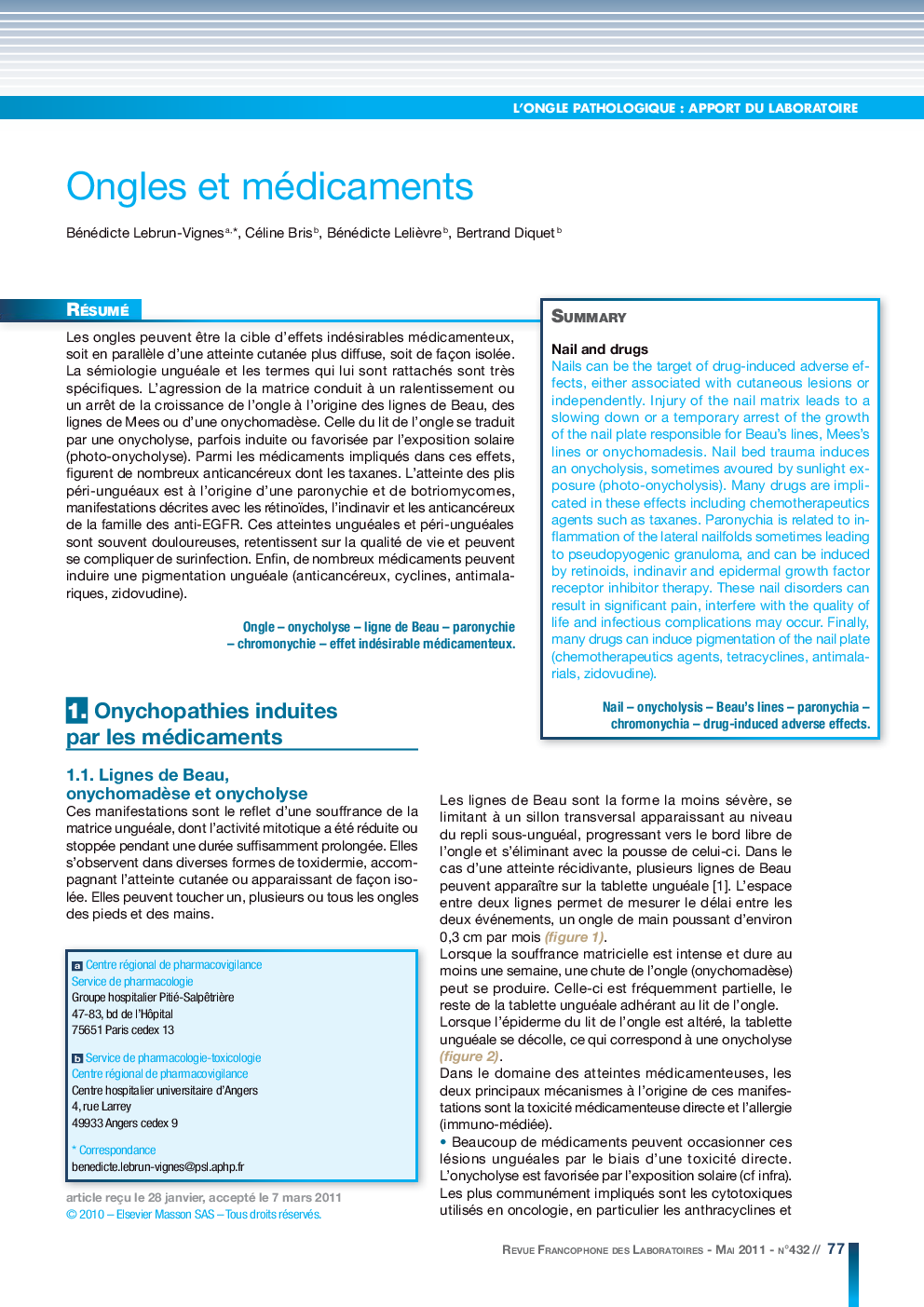| Article ID | Journal | Published Year | Pages | File Type |
|---|---|---|---|---|
| 7656436 | Revue Francophone des Laboratoires | 2011 | 5 Pages |
Abstract
Nails can be the target of drug-induced adverse effects, either associated with cutaneous lesions or independently. Injury of the nail matrix leads to a slowing down or a temporary arrest of the growth of the nail plate responsible for Beau's lines, Mees's lines or onychomadesis. Nail bed trauma induces an onycholysis, sometimes avoured by sunlight exposure (photo-onycholysis). Many drugs are implicated in these effects including chemotherapeutics agents such as taxanes. Paronychia is related to inflammation of the lateral nailfolds sometimes leading to pseudopyogenic granuloma, and can be induced by retinoids, indinavir and epidermal growth factor receptor inhibitor therapy. These nail disorders can result in significant pain, interfere with the quality of life and infectious complications may occur. Finally, many drugs can induce pigmentation of the nail plate (chemotherapeutics agents, tetracyclines, antimalarials, zidovudine).
Related Topics
Physical Sciences and Engineering
Chemistry
Analytical Chemistry
Authors
Bénédicte Lebrun-Vignes, Céline Bris, Bénédicte Lelièvre, Bertrand Diquet,
